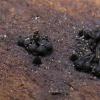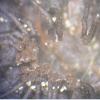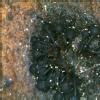
30-12-2025 16:44
Pascal DucosBonjour,Une anamorphe rose stipitée, très nombre

30-12-2025 17:14
 Bernard CLESSE
Bernard CLESSE
Bonjour à toutes et tous,Pourriez-vous aider Albe

29-12-2025 10:15
Hulda Caroline HolteHello, I found and collected this propoloid ascom

30-12-2025 09:04
Hello.A Pyrenomycete sprouting sparsely but very d

29-12-2025 17:44
Isabelle CharissouBonjour,J'aimerais savoir si d'autres personnes au

12-11-2021 00:03
Lepista ZacariasHi everybody,A week ago in my fiels trip I noticed

29-12-2025 17:12
 Bernard CLESSE
Bernard CLESSE
Bonjour à toutes et tous,Pourriez-vous m'aider à

Hello,
another pyrenomycete with distinct characters, but as I'm not familiar with pyrenomycetes I'm not too certain about the determination.
Macroscopically this is very similar to the drawing in DENNIS for Calosphaeria pulchella. However there are some differences:
- ecologically the species should be immersed in the substrate and only the long necks are to see. In my collection the whole fruitbodies were superfically "lying" on bark. It might be, that one layer of the bark split of not long before I found the perithecia, but nevertheless they were not immersed in wood.
- the necks of the perithecia are covered by a tomentum of orange hairs! See the fotos. I have not found that feature reported or drawn in the literature.
- the spores are slightly bigger than in DENNIS: 6-7,5 (8) x 2-2,2 (2,5) µm, but that may be due to my measurements being from living spores.
What is your opinion on this collection?
thank you and best regards,
Andreas
looks like Barbatosphaeria barbirostris. The ascospores should be 1-septate and it looks like they are in your photo.
Here's some literature:
http://www.mycologia.org/content/99/5/723.full.pdf
http://www.researchgate.net/publication/273261066_Molecular_systematics_of_Barbatosphaeria_(Sordariomycetes)_multigene_phylogeny_and_secondary_ITS_structure
Best wishes,
Gernot

Hallo Gernot,
mal wieder tausend Dank für die Hilfe - den hätte ich nie gefunden ....
Die Sporen waren in der Tat bisweilen septiert, aber ich hatte nicht den Eindruck dass sie dies bereits im Ascus gewesen wären.
beste Grüße,
Andreas








